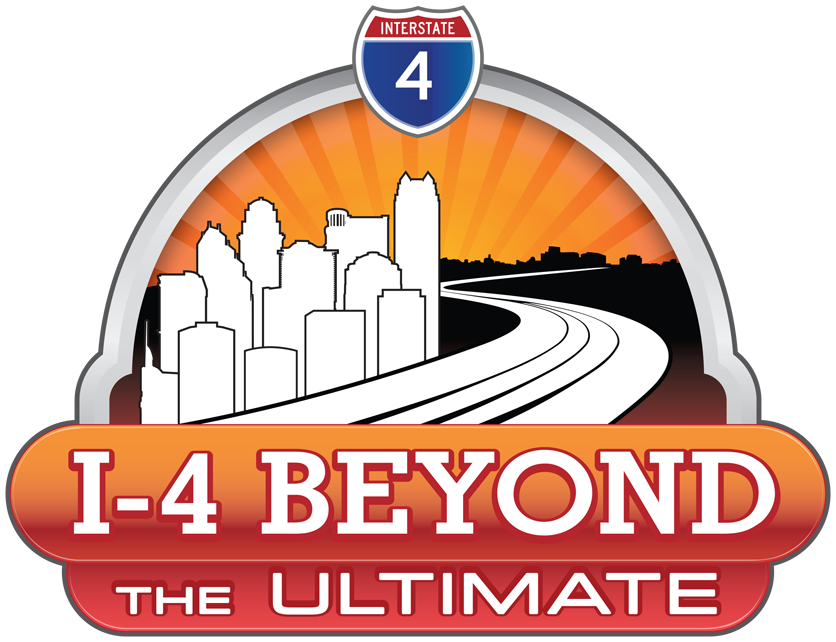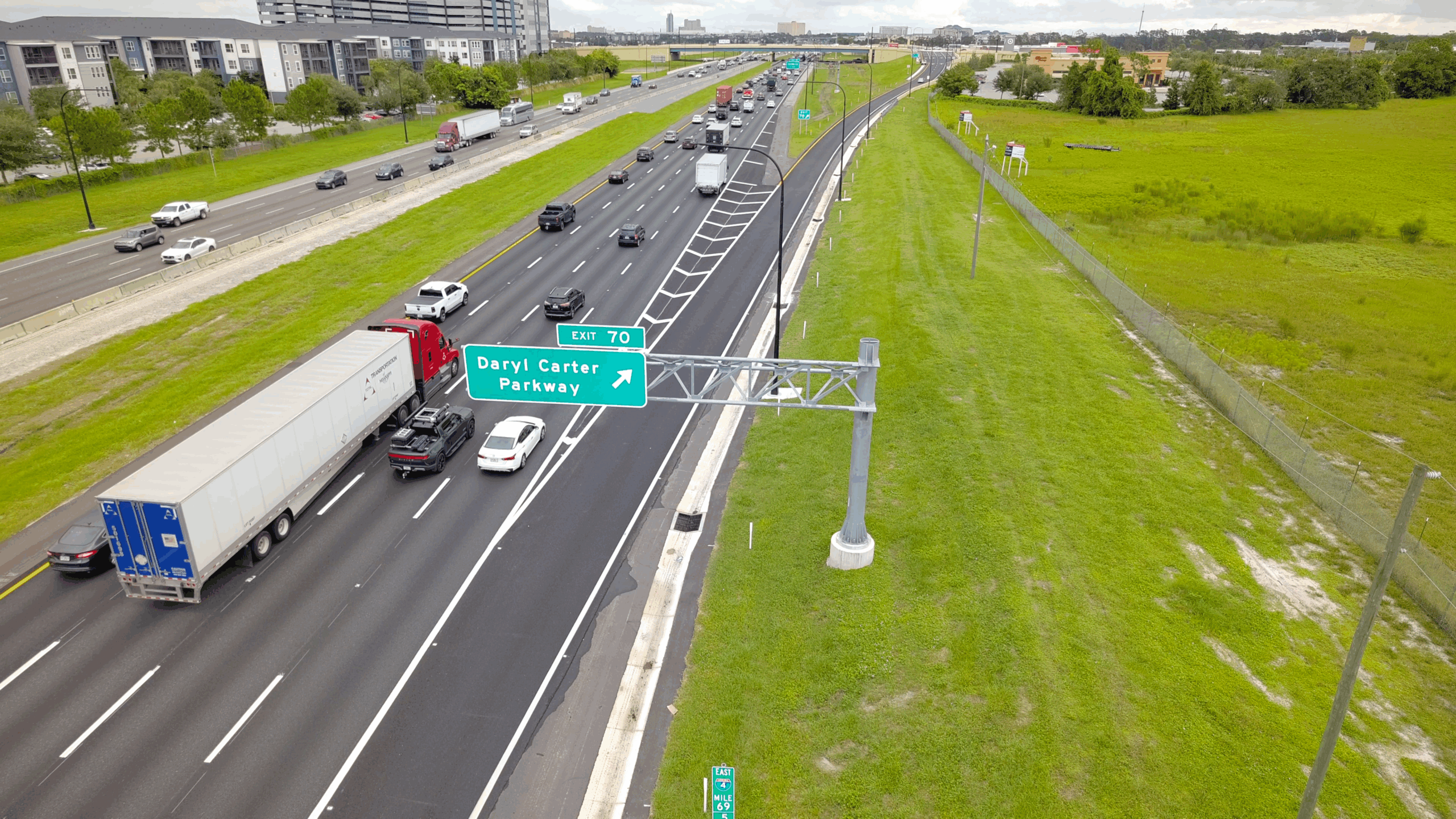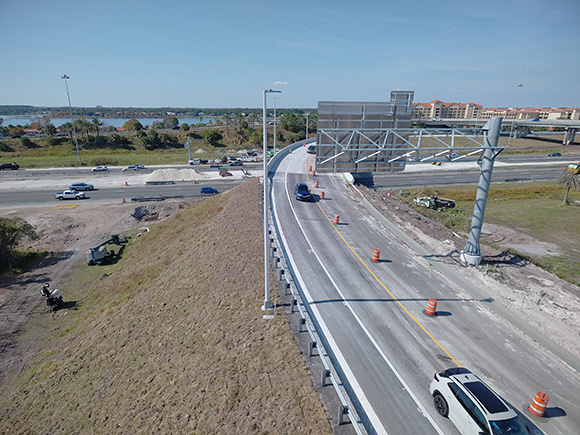You probably rely on road signs more than you realize. Whether you’re traveling somewhere new, or going somewhere you’ve been hundreds of times, signs help you find your way. All along Interstate 4 (I-4), signs of all types lead you through multiple intersecting roadways, ongoing improvement projects, tourism corridors, communities, and more.
These signs may alert you to construction, let you know the speed limit, guide you to the correct lane, direct you along a detour, warn you of curves or shifts in the road, or help you find your exit. We learn to read and follow roadway signs when we learn to drive, but have you ever considered how large some of the signs must be to allow you to read them at highway speeds?
Speed limits on I-4 range from 55 to 70 mph, which means a sign must be large enough to see from a distance that allows drivers time to absorb the message and take action. As a general rule, the faster the speed, the larger the sign. For example, the average size of speed limit signs along I-4 is 4 feet wide and 5 feet tall, compared to speed limit signs on conventional roads that are only 2 by 2.5 feet.
Design engineers use a variety of resources, like the Manual on Uniform Traffic Control Devices (MUTCD), established by the Federal Highway Administration (FHWA), and the Standard Highway Signs supplement as guides to determine the appropriate size for each sign, assessing safety and legibility throughout the process.
Most recently, design engineers with the Florida Department of Transportation (FDOT) coordinated the production and installation of more than 50 new signs of all sizes at the I-4 and Daryl Carter Parkway interchange. The largest signs at this new interchange are the green entrance and exit signs that guide motorists on and off I-4, like the one seen in the image above. This sign can be seen while driving on eastbound I-4 and is 20 feet wide and 6.5 feet tall. That’s larger than the average great white shark and nearly double the length of the average alligator!
While not every highway sign is comparable to Florida’s largest wildlife, most are bigger than they seem. This isn’t accidental; it’s all about perspective. Signs are designed to be clear, legible, and just the right size for drivers to understand at a glance, helping everyone get where they need to go safely.



 S.R. 528 Ramp-Widening Improvements Near Completion
S.R. 528 Ramp-Widening Improvements Near Completion I-4 Beyond the Ultimate: 2025 Wrapped
I-4 Beyond the Ultimate: 2025 Wrapped 60 Never Looked so Good: Happy Birthday, I-4!
60 Never Looked so Good: Happy Birthday, I-4! Cold Weather Brings Unique Construction Challenges
Cold Weather Brings Unique Construction Challenges